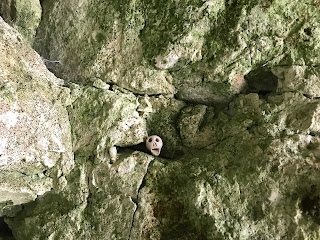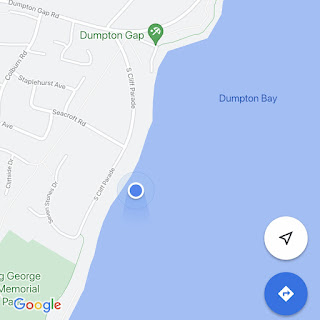The
chorus to Flanders and Swann’s Hippopotamus Song is what came to mind as I took
a walk along the paths of Roslin Glen. Though
I was out on what was a pleasant and sunny day, the night before it had poured
and poured, and the narrow paths leading around the gorge were
thick, squelching mud. To a chorus of bird song and the burbling of the river
below, I slipped and slid my way through a mire of dirty brown ooze. Not that I was complaining, I’ve always found
that a walk through the woods makes me feel quite relaxed, no matter how manky
it is. It is probably something to do
with the trees, their movement in the breeze and their calming aura. Or maybe something to do with a primordial
memory of the forests our ancestors once inhabited. Whatever, a walk in the woods is always very
calming.
So,
I sploshed my way along the path saying hello to a frog or two on my way, and
then came to a set of very wet and slippy looking stone steps that led down the
embankment of the gorge. However,
despite the way they looked, I found that grip on them was no problem, and it
was easy to walk on down them. They then
led to a narrow, trodden earth path that brought me to the entrance of a
cave. This is Wallace’s Cave, named
after William Wallace, you know the one, the guy with the painted blue face who
looked a bit like Mel Gibson, though was probably slightly less antisemitic.
The
reason the cave acquired its name is that there is a local legend that William
Wallace hid from the English army here.
The story goes that Wallace and his followers had been in a battle against
the English where they had been massively outnumbered and outmanoeuvred. After being heavily defeated, they had then
fled into the woods around Roslin with the English army in close pursuit. Wallace and five of his companions then split
off from the rest of his followers and made their way down to the cave. There they hid for six days and nights while
the English army scoured the woods for them, cutting down any man they found. In the early morning of the seventh day,
Wallace and his companions, who were now starving and half dead with hunger,
left the cave and managed to make their way out of the woods and to a place of
safety.
The
cave is man made and dates from prehistoric times. Carvings found outside the cave on the rock
face and inside the cave itself, are believed to date from the Bronze Age. However,
when, and why the cave was carved out into the stone of the embankment is not known. Whatever purpose and function the cave served
for the prehistoric people who created it are now lost in the mists of time.
Venturing
inside the cave I found it to be quite a pleasant and sheltered space. It was also quite dry; unlike many caves I’ve
visited before. In one of the recesses
in the cave I found some of the plumpest, juiciest spiders I’ve seen in
a long time. They hung from the roof
like luscious Gothic blackberries.
I
imagine if Renfield had been locked up in this cave rather than the asylum, he
would have plucked them from their webs and gobbled them up.
I
was half tempted myself, and did wonder if maybe Wallace and his companions had
munched on a few of them during their stay here.
Before leaving, I left
the Skulferatu that had accompanied me on my walk on a mossy ledge by the
entrance of the cave.
The
coordinates for the location of the Skulferatu are -
Latitude
55.856336
Longitude
-3.151793
what3words: satellite.newlywed.drifting
I
used the following sources for information on Wallace’s Cave –




























